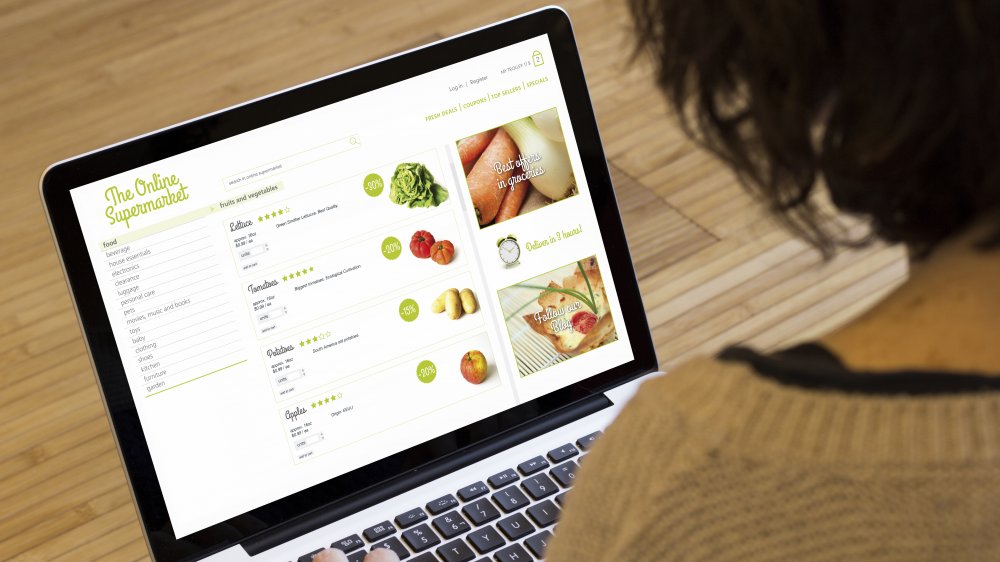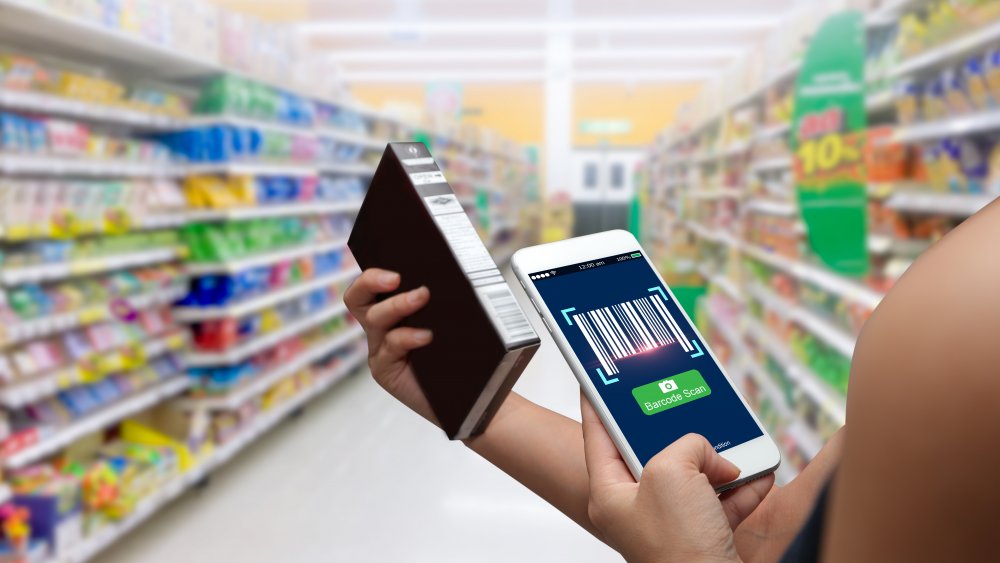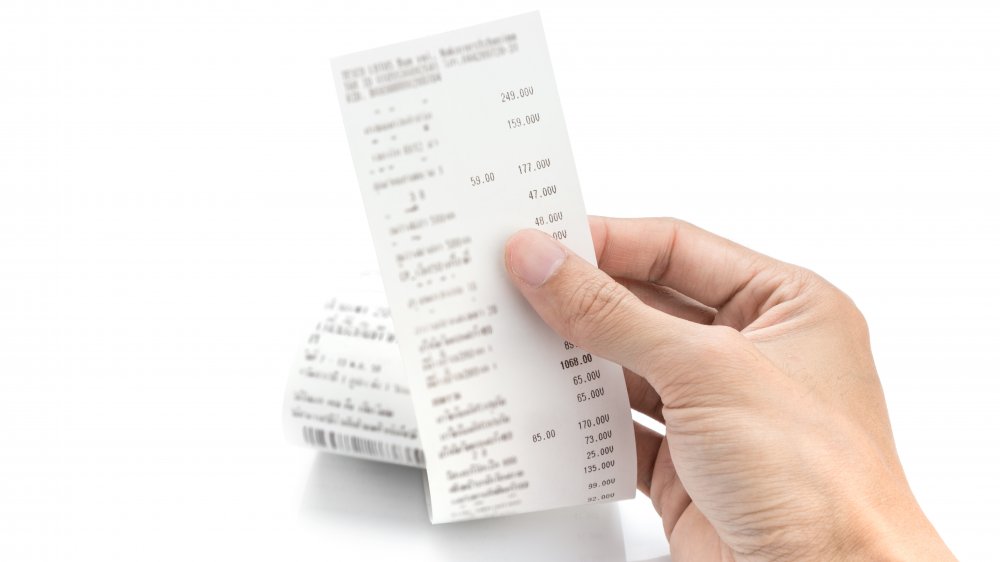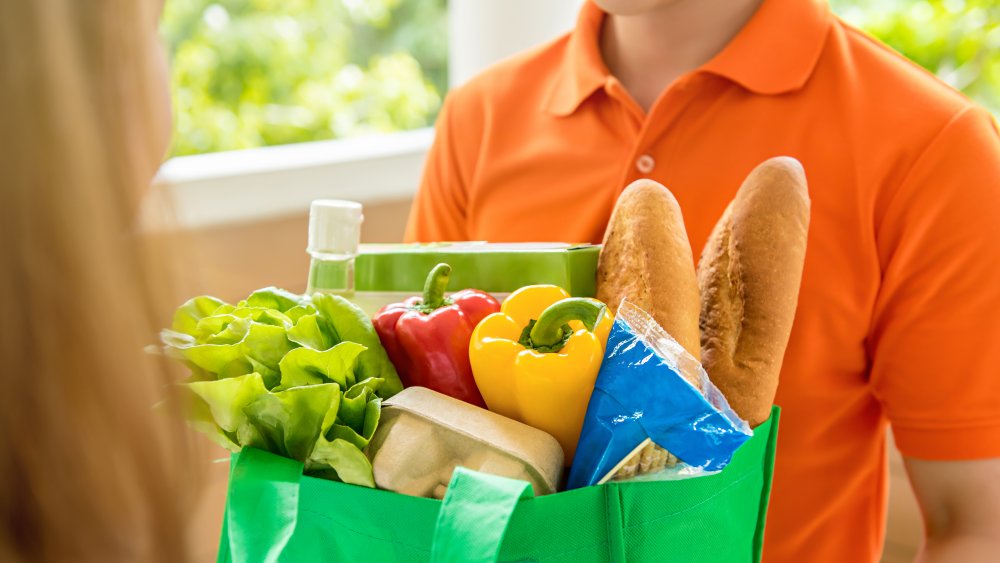Here's What You're Doing Wrong When Ordering Groceries Online
Are you new to online grocery shopping? This service has actually been around for years. According to Boston University's School of Hospitality Administration, grocery delivery was actually the norm up through the early part of the 20th century. Delivery services went into decline as grocery stores evolved into the "cash and carry" system we know today, where we fill our own carts instead of having kindly old Mr. Hooper hand us our items from behind the counter. Delivery came roaring back at the turn of this century, however, once the internet made online shopping a thing.
Even though online grocery shopping has been offered in most major US for the past two decades, it has taken some time to catch on with shoppers. At first, it does seem like kind of a weird thing, having some stranger picking out your fruits and veggies and wondering if they've been squeezing the Charmin. Finally, however, the convenience of having all things — not just books, clothing, and pizza, but truly everything anyone could possibly need — delivered right to the door won out. More and more of us each day are thrilled to outsource the grunt work of grocery shopping, virtually filling our carts with just a few clicks without once having to pry our butts off the couch.
Still, as a newbie shopper, there are a few things you'll need to watch out for — but don't worry, not a single one of these involves breaking a sweat.
You're expecting that the prices will match those on the store shelves
Shopping in the supermarket is pretty straightforward — each product is either marked with a price, or there's one right there on the shelf or bin. Sure, you might actually have to do some weighing and maybe even a little calculating (2.5 pounds of apples at $3.99 a pound is?), and then, of course, there's usually going to be sales tax, depending on your state.
If you're shopping online, however, you may not notice that the prices on some (if not all) items are quite a bit higher than those same items typically cost you in the store. According to the Dayton Daily News, this may be because grocery chains frequently offer in-store sales and discounts, but that these prices may not apply to online orders placed through grocery delivery services such as Instacart. In fact, one shopper went on Reddit to reveal that Instacart had charged him $123.21 for groceries that the store receipt revealed had cost just $86.87. This amounted to a 42.8 percent markup, and this is before any of the additional fees factored in.
You're unaware of all of the charges involved
Speaking of additional fees, these certainly add up. That Redditor who disclosed the aforementioned Instacart details wound up spending a total of $154.80 for those $86.87 worth of groceries, a hefty $67.93 convenience charge. Whoa, wait, how did they end up paying that much? Not only does Instacart charge a delivery fee ($5.99, in that case), but they also tack on an additional 5 percent of the total for a service fee. Other delivery services such as Peapod and Walmart don't charge percent-based service fees, but have delivery charges up to $9.95. (It must be noted that a point in Walmart's favor is that its product prices for delivery do match those on its store shelves.)
There will also be a minimum amount you'll need to order. In-store, you can buy as much or as little as you like without altering the price you pay. Many grocery delivery services, however, simply won't schedule a delivery until you hit a certain minimum. In other instances — as with Amazon Fresh — you're permitted to order small amounts of groceries, but you pay an extra $9.99 for the privilege.
And then, of course, there's the tip, which, of course, no-one can agree upon. It seems as if you tip around 10 percent, you'll be considered average, although if you want to go above and beyond, no shopper or driver will be insulted by your generosity. (Just don't be a jerk and retract the tip later.)
You're not being specific about substitutions
Perhaps the biggest mistake you can make when it comes to ordering groceries online is failing to check — or worse yet, being unaware of — the delivery service's substitution policy. If any item you order is unavailable, the default policy tends to be to allow the order-filler to substitute any item they feel is a reasonable replacement. While this may be perfectly fine if you are ordering, say, a dozen eggs, and they give you an 18-pack instead (with no additional charge, in many cases), or they give you a free upgrade to a brand-name item if the generic version is sold out, you might be less pleased if things work the other way round.
Most grocery delivery services will allow you to select on an individual basis whether or not you'll allow a replacement for any item on your list, and to leave notes regarding just what you'd consider an acceptable replacement to be. If, say, there's a particular brand of salad dressing that you like, and no other one will do, then you'll need to notify the shopper that no substitutions should be allowed in the event that this item is sold out. You could also specify something along the lines of, if salt and vinegar chips aren't available, you'll accept plain, but barbecue flavor chips are right out. If you leave everything up to fate — or your shopper — you're likely to be disappointed with your shopping experience.



